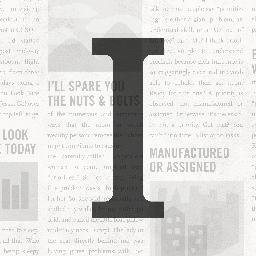Love in the Time of Inexorable Ruin: My Own Private New York City 1970s Film Fest
Cindy and I figured it'd be fun to work our way through iconic 1970s and -80s movies set in NYC. So last night, we started with Brooklyn's own Saturday Night Fever, which is surprisingly good. Beyond the boss disco moves, it's a story of class and ambition, manhood and misogyny, and a very particular place (Bay Ridge) and time (1975 - post-Vietnam, post-Watergate, post-counterculture, but mid-stagnation). It's about borough kids who live with their parents, never go to Manhattan, work hourly jobs all week, and then erupt in a tribal frenzy of swaggering misbehavior on Saturday nights. A great movie. That happy discovery, though, led us to spark up SNF's sequel, Staying Alive, which is engrossingly terrible -- hell, repellent -- in every way. The plot is absurd, the characters stripped of depth and unmoored from the deep sense of place that made SNF so alluring. Travolta spends much of the movie in a sweaty thong leotard (thongitard?) and headband. The dancing is so laughable it makes Showgirls seem like the Bolshoi. Frank Stallone's soundtrack is excruciatingly limp. Etc. The only good bit is the final 30 seconds of Travolta strut, which is the only moment in the movie that looks back, gloriously accompanied by the Bee-Gees, to Saturday Night Fever.
So to avoid repeating that mistake, I asked people on Facebook what else should go on the list for our festival of films from the modern ruins of New York. And the people responded. Here are their recommendations for the 1970s, sorted by category (I'll tackle the '80s in a future post):
o Apocalypse & Decline
The Warriors, Escape from New York (1981), Taxi Driver, The Panic in Needle Park, Death Wish, The Ultimate Warrior
o Crime & Punishment
The Godfather Part II, Mean Streets, Serpico, Dog Day Afternoon, The French Connection, Fort Apache The Bronx (1981), Across 110th Street, Klute
o They're Conspiring To Kill You
Marathon Man, Three Days of the Condor
o Blaxploitation
Shaft, Super Fly, Willie Dynamite, Black Caesar, Hell Up in Harlem
o Love & its Collapse
The Goodbye Girl, Kramer vs. Kramer, Plaza Suite
o Woody Allen
o Grooviness
o Awesomeness, Other
Fame (1980), The Prisoner of Second Avenue, Saturday Night Fever, The Out-Of-Towners, Live and Let Die, Network, Harry and Tonto, The Landlord, Opening Night
o Not Technically 1970s, but Close Enough
Midnight Cowboy (1969), Fame (1980), Cruising (1980), Escape from New York (1981), Fort Apache The Bronx (1981)
o Movies Set in 1970s NYC
Goodfellas (1990), Studio 54 (1998), The Royal Tenenbaums (2002), American Gangster (2007)
o TV Series
All In The Family, Maude, Barney Miller, The Jeffersons, Rhoda, The Odd Couple, That Girl, Kojak, Baretta, Welcome Back Kotter, Taxi, McCloud, Saturday Night Live, and, of course, Sesame Street and its Subway Song.
That's a lot of screen time. But dammit, New York City: You're worth it.
[Many earth-toned thanks to Jo, Naunihal, Lisa, Fred, Laura, Terra, Angela, Anil, Erika, Susanna, Eve, Ian, Mitch, Kenneth, David, Elan, Rodger, Pete, Stu, Michael, Adam, Howard, Yun, Daniel, Daniel, Dave, Stephanie, Glenn, Noah, Gina, Lara, Daniel, Ronaldo, Jed, David, Brian, Russell, Yoram, Michael, Paul, Yael, Matt, Robin, Jim, Andrew, Chris, and Richard.]

